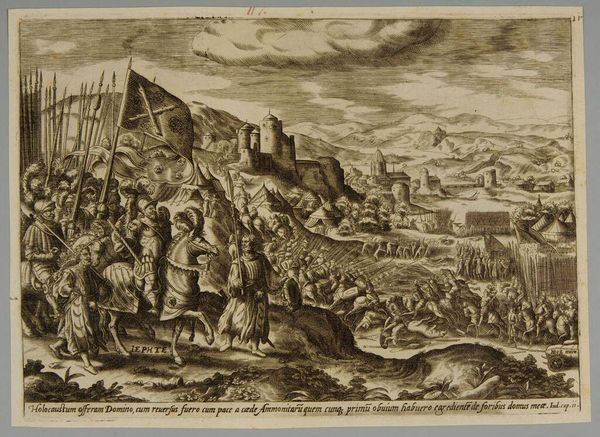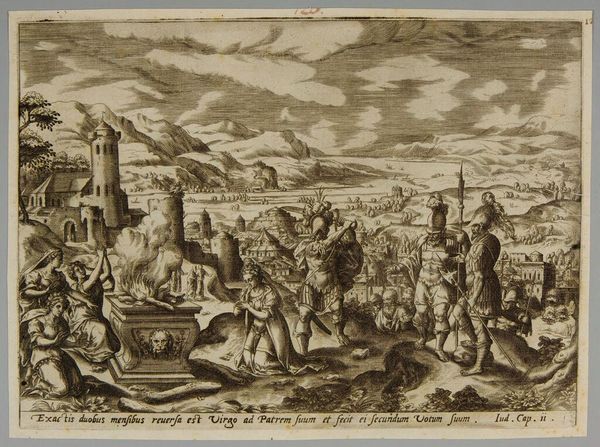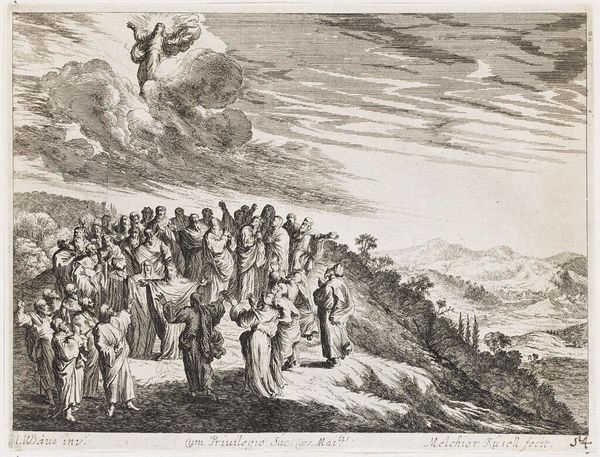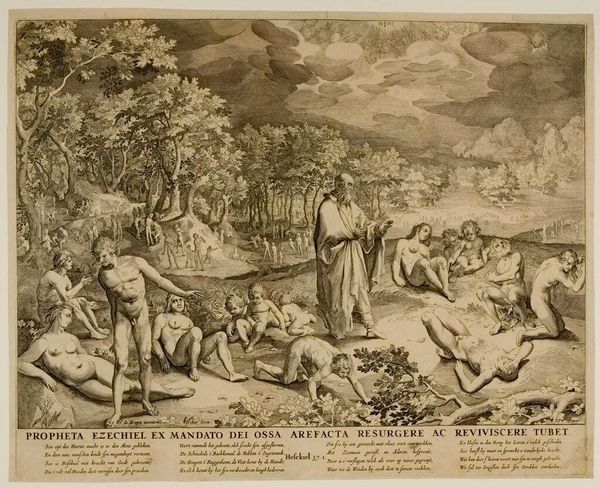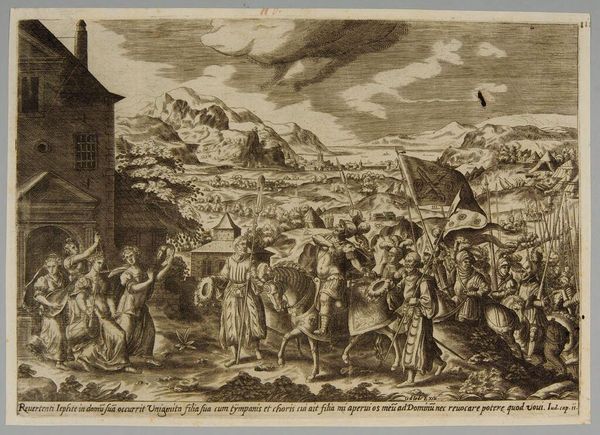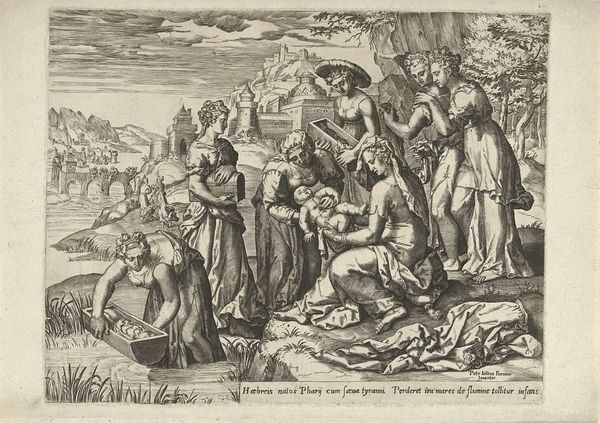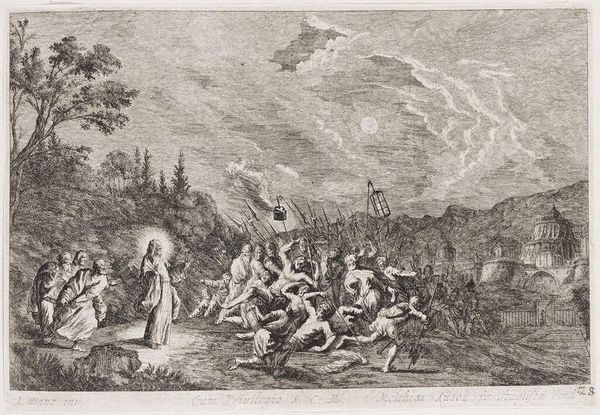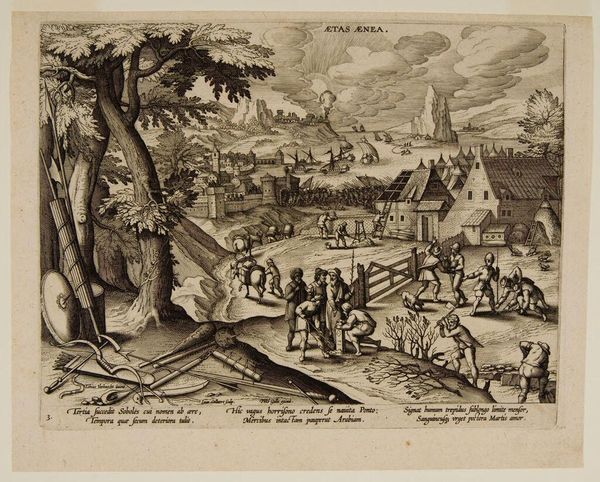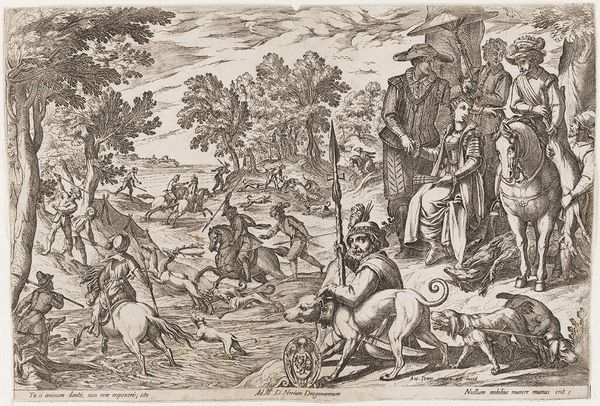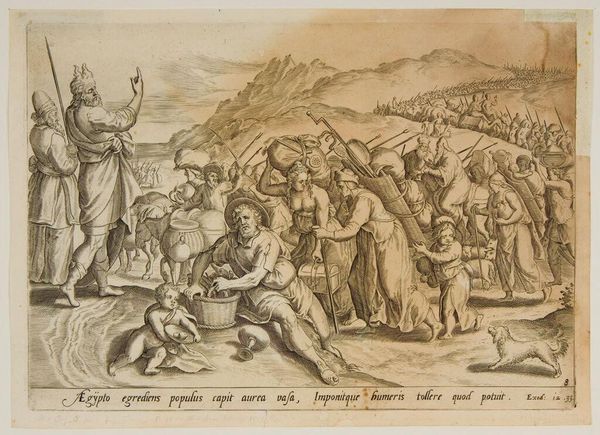
Copyright: CC0 1.0
Curator: Here we have Gerard de Jode's "The Story of Jephta, Pl. II," a fascinating print held in the Harvard Art Museums. Editor: There’s a definite somber mood. The figures in the foreground have a clear sense of melancholy, and the landscape seems almost forbidding, despite its detail. Curator: De Jode likely drew upon the biblical story of Jephta, exploring themes of sacrifice and patriarchal structures. The print likely circulated amongst educated audiences. Editor: The material process itself is compelling. The sharp lines of the engraving create a striking visual texture, emphasizing the weight and texture of the garments and the ruggedness of the landscape. It's a work that reflects the meticulous labor of the artist. Curator: Precisely, and note how the composition directs our gaze from the figures to the city in the distance, possibly representing the community for whom this sacrifice is made. Editor: Seeing the end result, the labor and time involved makes one consider the socio-economic conditions required to even produce such work. Curator: It gives us a glimpse into the 16th century's complex interplay between religion, society, and artistic production. Editor: Agreed, understanding how these images were made really opens our eyes to the conditions that enable art.
Comments
No comments
Be the first to comment and join the conversation on the ultimate creative platform.
